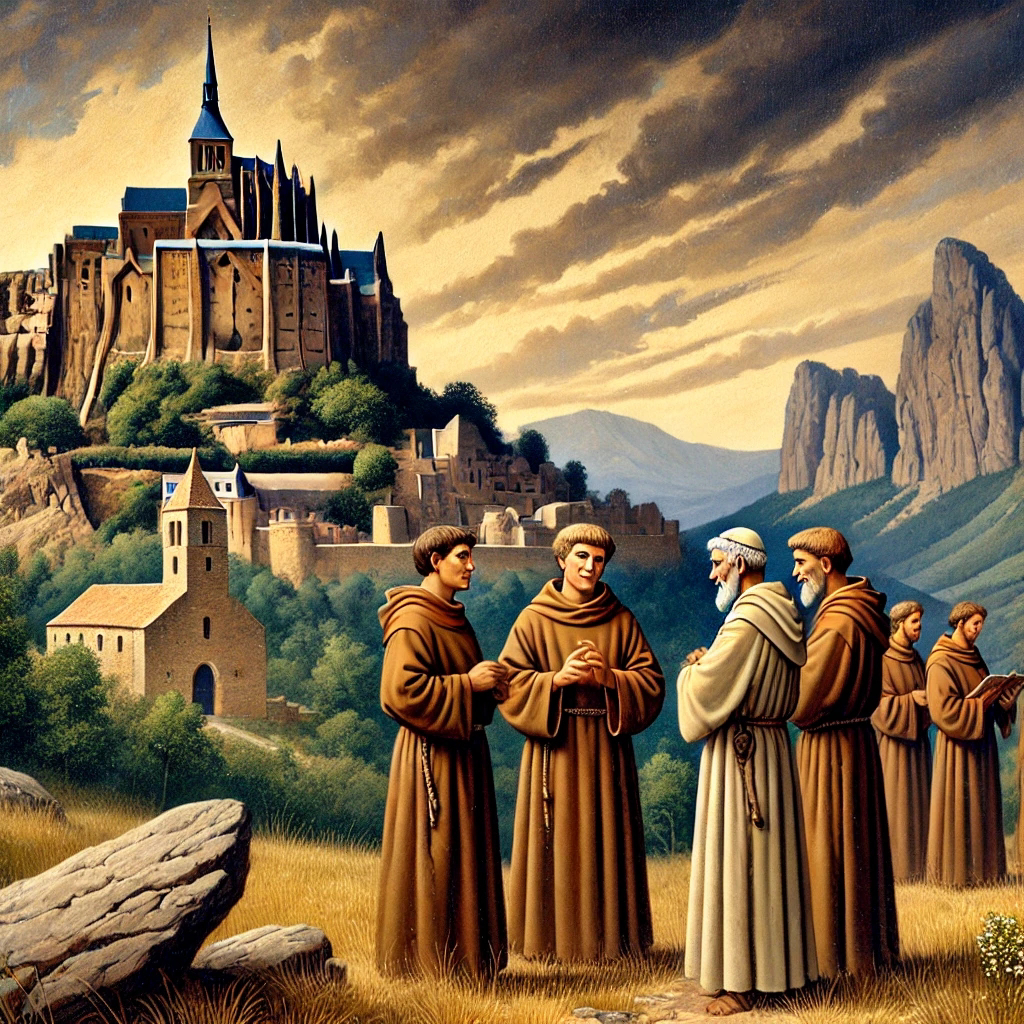The Cathars were a Christian sect that flourished in medieval Europe, primarily in southern France, during the 12th and 13th centuries. They stood apart from the dominant Catholic Church, challenging its teachings, hierarchy, and materialism. Their beliefs, often labeled as heretical, led to their violent suppression in one of history’s first large-scale religious crusades. Today, they are remembered as martyrs of religious freedom and symbols of lost spiritual knowledge.
Origins and Beliefs
The Cathars traced their spiritual lineage to early Gnostic traditions and dualist philosophies. They believed in two opposing forces: a pure, benevolent God of the spiritual realm and a corrupt, malevolent entity ruling the material world. This dualistic view led them to reject the physical realm as inherently evil and temporary. Salvation, to them, meant escaping the cycle of rebirth and uniting with the divine.
Unlike the Catholic Church, Cathars rejected the Old Testament, which they associated with the corrupt deity. They viewed Jesus Christ as a purely spiritual being who never took physical form. His mission, they argued, was to guide souls away from the material world, not to redeem it through sacrifice. This interpretation placed them at odds with mainstream Christian doctrine.
The Perfecti and the Believers
Cathar society was structured around two distinct groups: the Perfecti and the Believers. The Perfecti were the spiritual elite, living lives of strict asceticism and rejecting all material possessions, sex, and meat. They embodied the path to salvation, acting as guides and role models for the wider community.
The Believers, on the other hand, were ordinary followers who lived within society but supported Cathar teachings. They could engage in normal social functions, but their goal was to eventually receive the consolamentum, a spiritual baptism that purified their souls before death. This rite was crucial, as it was believed to sever ties with the material world and ensure liberation.
The Cathar View on the Church and Society
The Cathars rejected the authority of the Catholic Church, seeing it as an institution of corruption. They accused the clergy of hoarding wealth, living in excess, and promoting false doctrines that chained people to the material world. To them, the sacraments of the Church—such as baptism and communion—were meaningless rituals.
Instead of churches, Cathars met in homes and open spaces, emphasizing a direct connection with the divine. They also rejected the concept of hell as an eternal punishment, believing that souls reincarnated until they achieved spiritual liberation. Their views on the afterlife were more aligned with Eastern philosophies than traditional Christianity.
The Role of Women in Catharism
Catharism offered women a degree of equality rarely seen in medieval Europe. Women could become Perfecti, leading communities, preaching, and performing the consolamentum. This was in stark contrast to the Catholic Church, which restricted women’s spiritual roles.
The inclusion of women as spiritual leaders made Catharism particularly appealing in a world where women had few rights. Many noblewomen were drawn to the movement, offering protection and resources to Cathar communities. This egalitarianism further fueled Church opposition, as it directly challenged traditional gender roles.
The Albigensian Crusade: The Church Strikes Back
The Catholic Church saw the Cathars as a dangerous heresy that needed to be eradicated. In 1209, Pope Innocent III launched the Albigensian Crusade, a brutal military campaign against the Cathars and their supporters. This was one of the first times the Church directed a crusade against fellow Christians instead of external enemies.
The crusade led to massacres, sieges, and widespread destruction, particularly in the Languedoc region of France. The city of Béziers was among the first to fall, with thousands slaughtered—Cathars and Catholics alike. The infamous phrase “Kill them all; God will know His own” is said to have been uttered during this campaign.
The Fall of Montségur and the End of the Cathars
The last major stronghold of the Cathars was the fortress of Montségur, perched high in the Pyrenees. In 1244, after a long siege, the fortress fell, and over 200 Cathars were burned alive for refusing to renounce their faith. This event marked the effective end of organized Catharism.
Despite this brutal suppression, Cathar beliefs persisted in secrecy for several more decades. Some remnants of their ideas can be traced in later mystical and esoteric traditions. However, by the 14th century, they had largely vanished from recorded history.
Legacy and Influence
The Cathars left an enduring legacy, inspiring later religious movements that opposed Church corruption. Their emphasis on direct spiritual experience resonates with modern seekers of alternative spirituality. Some scholars even link Cathar teachings to the rise of Freemasonry and other secret societies.
Today, the ruins of Cathar castles and the legends surrounding them attract visitors and historians. Their story serves as a reminder of the dangers of religious intolerance and the resilience of forbidden ideas. The Cathars may have disappeared, but their challenge to religious authority echoes through time.
Conclusion
The Cathars represented a radical spiritual movement that clashed with the dominant forces of medieval Europe. Their beliefs, practices, and ultimate destruction highlight the tensions between institutionalized religion and independent thought. While they were extinguished by fire and sword, their ideas still flicker in the annals of history. Their story is one of defiance, persecution, and the enduring quest for spiritual truth.
Stay curious.




